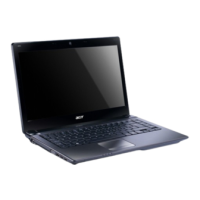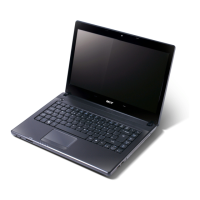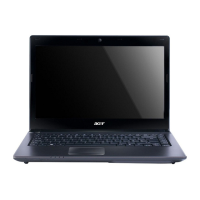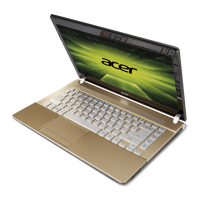Troubleshooting 4-31
0x98 Search for option ROMs. Rom scan the area from C800h
for a length of BCP_ROM_Scan_Size (or to E000h by
default) on every 2K boundary, looking for add on cards
that need initialization.
LBT Core
0x93 Build the MPTABLE for multi-processor boards LBT Core
0xD9 IPMI late init
0x9C Set up Power Management. Initiate power -management
state machine.
0xC7 Late note dock init
0x9E Enable hardware interrupts
0xA0 Setup time tick for current date/time
0xA2 Setup Numlock indicator. Display a message if key switch
is locked.
0xA4 Initialize typematic rate
0xDB StrongROM Test
0xE2 OEM security key test
0xC2 Write PEM errors.
0xBA Initialize the SMBIOS header and sub-structures.
0xC3 Display PEM errors.
0xA8 Overwrite the "Press F2 for Setup" prompt with spaces,
erasing it from the screen.
0xAA Scan the key buffer to see if the F2 key was struck after
keyboard interrupts were enabled. If an F2 keystroke is
found, set a flag.
0xE1 Start Periodic Timer (TC Subscribe)
0xAC Check if "Enter SETUP" is pressed.
0x8F Count the number of ATA drives in the system and update
the number in bdaFdiskcount.
0x91 Configure the local bus IDE timing register based on the
drives attached to it.
0x9F Check the total number of Fast Disks (ATA and SCSI) and
update the bdaFdiskCount.
0xD7 Check if FirstWare HPA exists
0xAE Clear ConfigFailedBit and InPostBit in CMOS.
0xB0 Check for errors and decide if needs to run Setup.
0xB2 Change status bits in CMOS and/or the TrustedCore data
area to reflect the fact that POST is complete.
Table 4-4. POST Codes
POST Code Function Phase Component
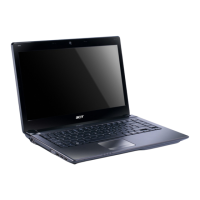
